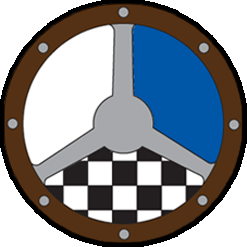Ask a pro
Receive advice directly from today’s top stars


Ross Bentley
Head Coach Speed Secrets
Ross Bentley is a performance coach, author of the ‘Speed Secrets’ series of books, and former racing driver.
Speed Secrets focuses on racing technique and strategy through coaching, helping drivers perform better on track at any level.
A former driver in the CART IndyCar series in the 1990s, Bentley became one of only seven Canadian drivers to race in the series before making a switch to sportscar racing.
In 2003 he won the 24 hours of Daytona after coming first in his class and went on to set up Bentley Performance Systems, drawing on his racing experience to help individuals, teams, and organizations.
He regularly writes about these topics in ‘Speed Secrets Weekly’ which is released every Tuesday, and has previously written for Road&Track and RaceTech magazine.
Ross Bentley answers your questions!
-
Randy Pobst
Hi, Ross! What’s the difference between blocking and defending? Where’s the line drawn for proper, fair, safe racing?




The difference is that defending is okay, and blocking is not!
In most series, blocking is defined as making more than one move to “discourage” another driver from passing. In other words, if you move to the inside to take that line away from a driver trying to pass, and then move back to the outside if that driver moves there, then that is blocking because there were two moves. And that’s wrong. In most series it goes against the rules, but it’s also dangerous, and unfair. However, if you move to the inside to take that line away from a driver that is attempting to pass, that’s okay – that’s one move. I could get all preachy here and say that if it takes more than one move to keep another driver behind you, then you’re not fast enough and maybe following that other driver for some laps might teach you something that’ll make you fast enough to pass him/her back. Where this gets super-tricky is when it gets down to the last lap or two of a race, and you’re wanting to do everything you can to maintain your position. But even then, two moves are likely going to get you penalized by the officials – and that might cost you even more than the one position you might lose if you only make one move.
-
Ben Amado
What’s your best advice for improving as a racer as quickly as possible when you have limited on-track time?




Simulator training, karting, mental training, and study. Okay, karting still requires that you get on a track, but it’s often less expensive and more accessible. Using a simulator in a very strategic and deliberate way – one that is focused on learning, and not just on lap times and race results – is super-productive. That takes discipline and planning, but it’s worth it. Mental training can be as helpful as actual track time. By that, I’m talking about a focused mental imagery program, where you spend time programming your mind with specific scenarios on a daily basis. It’s no different from going to the gym for physical training – if you’re not spending as much time on mental training as you do in the gym, then you’re giving an edge to your competitors who are committed to doing what it takes. Finally, I’d add anything you can do to learn while away from the track will make every second you do spend on track more effectively. Videos, books, training courses, talking and learning from engineers, mechanics, other drivers, coaches, and anyone else you can learn from. You’re already doing that here at SAFEisFAST, but the more of this you do, the better.
-
Nick Vance
How important is the balance between getting back on the power early and quickly exiting a corner, but making sure that you are smooth?




This is a tough one because smooth is fast, and yet you can be too smooth.
Think about it: One way to be smoother than every other driver is to drive around at 1mph! That would be smooth, wouldn’t it?! What came to mind when I read your question is that sometimes we can be so focused on getting back to power early that we start to apply the throttle, then have to ease up to avoid driving off the track. The car wasn’t pointed in the right direction to go back to that much throttle yet. That’s being too greedy with the throttle, it’s not smooth, and it costs time. You’d be better hesitating just for a fraction of second to wait until you can begin applying the throttle at a time, and in a way that you can continue to feed it in all the way to full throttle. In most cases – but not all – it’s more important where you get to full throttle than it is when you just begin to tip into the throttle. Of course, the best drivers are both smooth and get back to full throttle early. That sometimes takes a bit of patience and discipline.
-
Panos
How important is circuit visualization for a driver?




It’s critical. The best drivers can visualize every inch of a circuit. If you can’t, then you’re leaving something on the table, and you’ll get beaten by others who have developed this skill. When I think of the best drivers that I’ve coached – drivers of all levels, but the ones who win the most at whatever level and form of racing they’re involved in – they are all better at visualization than the drivers they beat most often. And here’s an important point: visualization, or what should be called mental imagery, is a learned skill. You can get better at it, and you will improve with practice. I’ll point out the difference between visualization and mental imagery, too. The first is simply imagining what you see, whereas with mental imagery you also imagine the sound and feel of driving, and actually move your body. I’ve had drivers tell me that they have a hard time imagining an entire lap, and in most cases, that’s because they’re not including the sound and feel/movement. As you do mental imagery, make it as real as possible by including your kinaesthetic and auditory senses, along with your vision.
-
Ben
When studying old races, do you take notes in a notebook, and if so, do you ever take notes on the same race video multiple times?




I’ll admit that I don’t do this as much as I used to. Sure, I like to review a past race prior to going to coach a driver to get a feel for how it usually plays out. I look for trends, strategies, and where the problems typically happen. And yes, I make some notes – I do it all on my phone and iPad now. But I will rarely watch it more than once. I’m not saying it’s not worth watching more than once, but maybe after either watching, driving in, or coaching other drivers in races for over 50 years (my first race was when I was 5 years old), I’ve seen a lot. I now find that I want to go into races with more of an open mind towards what could happen, and if I watch too much of what’s happened in the past, it clouds my thinking.
How many times have you seen a race where everyone predicted there’d be many full-course cautions, and there were none? Or vice versa? So, it’s important to learn from past races, but be open to what could happen this time around. Finally, it’s the act of thinking about and writing the notes that is valuable, more than the actual content of the notes. The process of note-taking makes you clarify your thinking, which makes it all that much more worthwhile.
-
Colin Cohen
One thing I continue to struggle with (even after 20 years of largely amateur sports car racing in the US) is finding and retaining my brake points. What could/should I be doing to create these points of reference from seemingly nothing?




First, are you making notes of your references on a track map? Actually writing them down? If you do that, they’ll stick with you better – you’ll remember them better. And I’m talking about actually writing by hand on a track map. A quote I like to refer to is from social behavior scientist, Robert Cialdini, who says: “People live up to what they write down.” In other words, if you write down your references, you’ll live up to using them more often. Plus, if you know that at the end of every on-track session you’re going to sit down with a track map and write notes, your brain will automatically begin to store what’s important for you to do that. Sure, it takes practice, but you’ll keep getting better at note-taking, the more you do it.
One thing many drivers make a mistake with is focusing too much on where they begin braking – what I call the Begin-of-Braking (BoB) point – and not enough on where they end braking, the End-of-Braking (EoB) point. If you look into where you want to end your braking – that point where your foot has finally come completely off the brake pedal – you’ll naturally be looking more into the corner, and you’ll find that where you begin braking is easier to find and use. In fact, your BoB becomes more of a secondary reference point, and the EoB is your primary reference. Think about it: you judge where you begin braking based on where you’re going to finish, rather than just using a point on the straight as to where you’re going to begin braking. After all, is it possible that the speed you’re at as you get to where you begin braking is different, based on how you got out of the previous corner or the traffic you’re racing with? And shouldn’t that change where you begin? The best way of judging this is by looking more for your EoB. Don’t get me wrong, you don’t have to have an exact point – a crack in the pavement, for example – to tell you where you finish releasing the brakes. But if you’re visually and mentally focused in that area, your braking will be more consistent.
-
Mel Kemper
An area I really want to work on is “trail braking” and “brake release.” Do you have some training techniques or drills to use, to focus on & practice on, so I can better feel & use the “end of braking” to best advantage?




The main drill or exercise that I use when coaching drivers is getting them to spend an entire practice session just on experimenting with the timing and rate of release of the brakes. Entering a corner, you can begin releasing the brakes before you start turning the steering into the corner, at the exact same time, or after you begin turning in; then, you can release the brakes slowly, quickly, or somewhere in between. So, there’s a multitude of timings and rates of release of the brakes. Many drivers use the same timing and rate of release in all corners, but that can’t be right. Some corners reward an early and fast release, others a late and slow-release, others an early and slow-release, and so on. The better you get at adapting the timing and rate of release of the brakes, the faster you’ll be in all corners, and not just the corners that suit your current brake release style.
The drill is going on the track and experimenting with varying the timing and rate of release in a very deliberate way. Spend a lap or two with an early and slow-release; a lap or two with an early and fast release; a lap or two with a late and slow-release; a lap or two with a late and quick release. And mentally make note that when you do “this,” the car does “that”; and when you do “that,” the car does “this.” You’re building a mental matrix of “if-then…” scenarios, and when you want the car to do “that,” you’ll know what to do. This has been one of the most effective exercises ever for the drivers I’ve coached. They come away not just being a bit faster, but more consistently faster because they’re now better at adapting to what the corner and car needs. Oh, and I said “an entire practice session.” That doesn’t mean that this is a one-and-done deal. No, you should do this every now and then, and continue to fine-tune your braking.
-
David (Ross’ favourite drummer student!)
Is it better to treat the double apex corner as a single apex corner or is there room for a little more brake release – or quick blip of the throttle – to gain a bit more “mid-corner” speed through the short stretch of the track?




It mostly depends on the length of the corner you’re talking about, but in many corners that can be driven with a double apex, I like to think of them this way: Drive it in hard and deep, collect it in the middle, and drive it out hard. If you think about a corner that is about or near 180-degrees (Turn 2 at Laguna or Thunderhill, the Carousel at Road America or Mid-Ohio), there’s enough time in these corners to drive in fast, get the car sorted out in the middle of the corner, and then exit fast. If you drive them with the classic “in slow – out fast” approach, you’ll be slow because you spend too much time being slow! The corners are long enough to drive in fast and come out even faster. To use this approach, you definitely use more of a double apex. If you use a single apex, you’re probably entering slower than necessary. This approach that I’m talking about is also referred to a “diamond” line because you tend to enter on a diagonal, clipping past the first apex area, letting the car drift out a bit in the middle of the corner where you turn the sharpest (and therefore are at the slowest speed, at the point of the diamond), and then are on an increasing arc clipping past the second apex and exiting the corner. Watch drivers on a short oval track, and you’ll see this style used a lot because they carry a lot of entry speed, turn the car the most in the middle of the long corner, and then get a strong exit off the corner.
-
Randy Samson
Should all series that run in the rain specify through race control when rain tires need to be used? For example, the temptation to switch to dry tires first to gain an on-track advantage is hard to resist.




I certainly wish they wouldn’t! Maybe it’s my old way of thinking, but I think the less the officials are involved in the results of a race, the better. So, the fewer the calls they make, the better for the racers and the fans. When the officials declare it to be a wet race and everyone has to run the same rain tires, it takes away from the strategic thinking of the teams and drivers. I understand that they’re trying to keep it safe for everyone, but there’s nothing like a team and driver gambling on a strategy to mix things up and make it more interesting. And this is even better if one driver just has that extra edge in wet conditions, and makes it work!
-
Grant Heizenrader
What tips and advice do you have for an aspiring driver coach/data analyst?




Get as much varied experience as possible, no matter what that takes. If it means volunteering to work with a driver and/or team, go for it. And variety is super valuable. On the coaching side, instruct for various schools, at all levels of the sport – you’ll learn something from all of that experience. Personally, there are times when I’m coaching a race driver when something I learned while instructing cops and military personnel in pursuit driving has helped. Or experience instructing a different sport or activity helps. Note that most of the best driver coaches were not necessarily the most successful race drivers. In fact, some of the best drivers don’t make the best coaches because they haven’t had to figure out what it took themselves. Having said that, it’s critical that you can relate and empathize, so you need some experience. Do what it takes to get at least that minimum amount of experience. As for the data geek role, it’s much the same – get experience. Work with as many teams/drivers as you can, and use as many of the different systems.
At first, it’s best to be a generalist, before you even begin to be a specialist with one specific system. With data, I’ll add that you need to learn as much as you can – that’s a must, obviously. Fortunately, there is a ton of resources out there to help you learn more. In fact, something that certainly covers the driver coach role – and I think the data analyst, as well – is that to be a great teacher/instructor/coach, you first need to be a great learner. If you’re not passionate about learning, then I think you need to find another profession. Oh, and one last thing about the coaching role (can you tell I’m a bit passionate about this?): Your personal motivation is probably more important than anything. If you don’t have a burning desire to help others, then you’re never going to be a great coach. If you’re wanting to be a coach because it’ll keep you near the track, and it’s just a job… well, okay, go ahead. But understand that you’re never going to be as good a coach as someone who truly loves coaching and helping others. For me, I made the switch when I took my helmet off. As a driver, it was all about me. As a coach, it’s all about the driver I’m coaching. That’s why it’s not for everyone.
 Road Racing Drivers Club
Road Racing Drivers Club
 Share
Share







